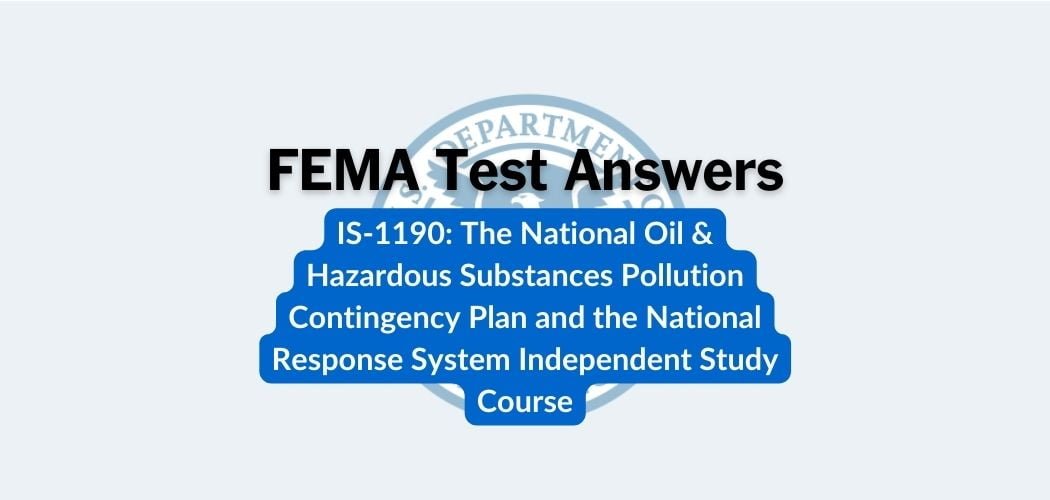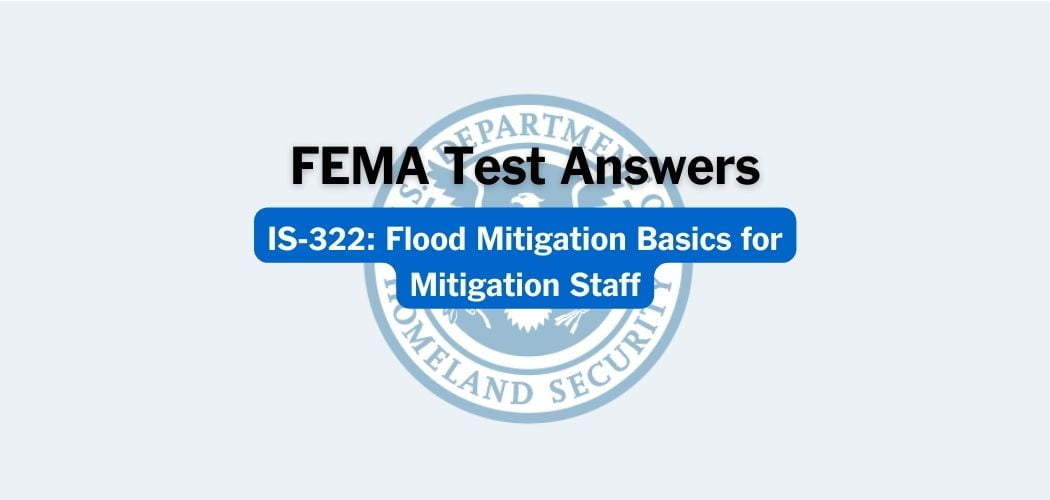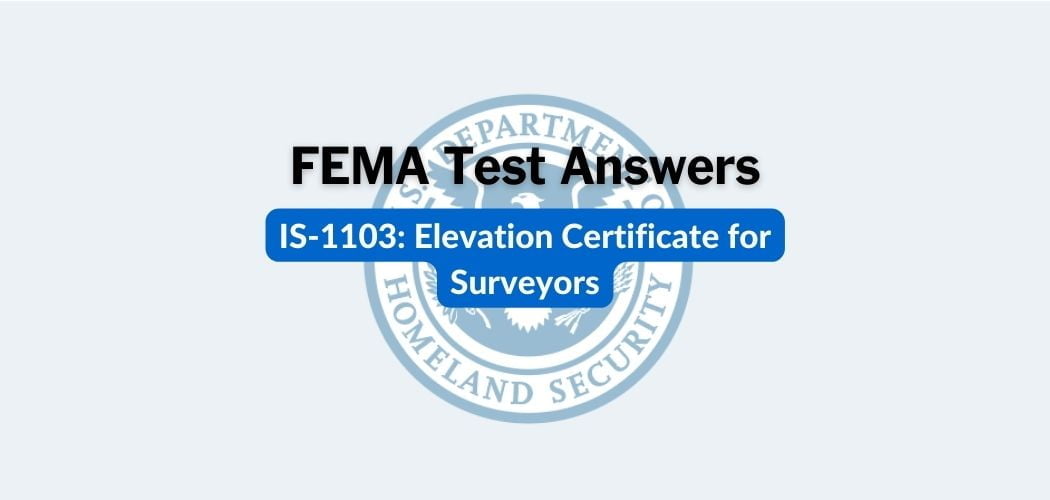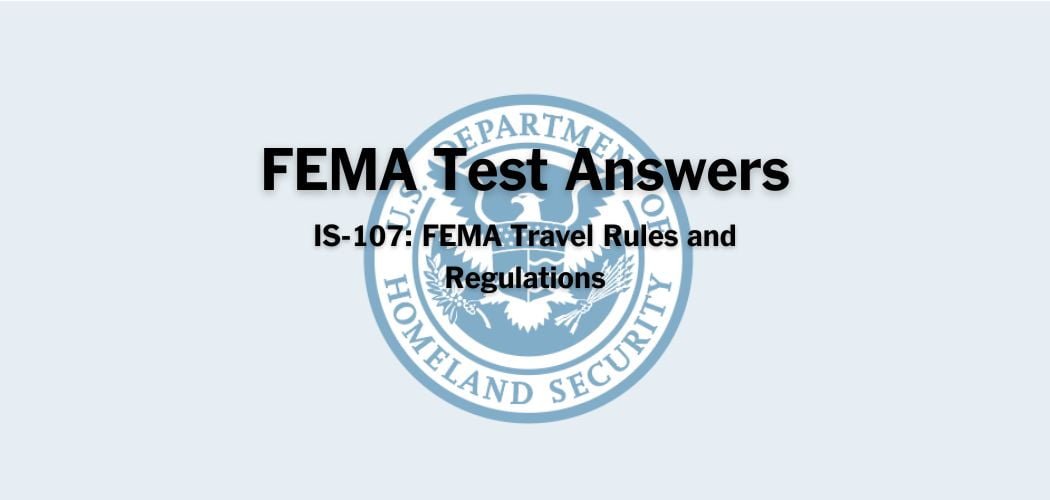Overview: FEMA IS-916 course was published on 10/31/2013 to introduce personnel to the critical infrastructure information needed to identify threats and vulnerabilities including theft and diversion of critical resources that can be used for criminal or terrorist activities.
FEMA IS-916 also identifies actions that can be taken to reduce or prevent theft and diversion. There are no prerequisites for this course. However, participants should take IS-906: Workplace Security Awareness, to provide a foundation for this course.
FEMA IS-916 test answers
Each time this test is loaded, you will receive a unique set of questions and answers. The test questions are scrambled to protect the integrity of the exam.
Question 1. The following are potential threats to critical infrastructure from theft and diversion activities, EXCEPT FOR:
A. Developing advanced technologies.
B. Business failure.
C. Providing funding for criminal acts.
D. Providing materials to support terrorism.✅
Question 2. TRUE OR FALSE: Organizations can identify potential targets for theft and diversion by working with security or law enforcement experts.
A. True✅
B. False
Question 3. TRUE OR FALSE: Verifying customer information for new customers will help to prevent potential theft and diversion.
A. True✅
B. False
Question 4. The following are protective measures that you can take to prevent theft and diversion, EXCEPT FOR:
A. Redesigning management processes to improve performance data.
B. Pre-approving authorized buyers for monitored items.
C. Implementing internal reporting procedures for potential incidents.✅
D. Establishing a smart hiring process for new employees.
Question 5. Which of the following actions should all employees take during a potential theft and diversion incident?
A. Report the incident as soon as possible.✅
B. Aggressively question suspicious persons.
C. Confiscate any stolen or diverted items.
D. Physically restrain suspicious persons.
Question 6. Which of the following behaviors is unusual and a potential indicator of theft and diversion?
A. A recent decrease in the number of items that have been reported stolen, lost, or damaged✅
B. An manager’s inability to work overtime whenever it is offered
C. Any order of an item that is closely monitored
D. An employee describing overly expensive purchases for the expected income
Question 7. Which of the following ordering activities is unusual and a potential indicator of theft and diversion?
A. An order for a closely monitored item from a regular customer
B. A standing order for a large quantity of closely monitored products✅
C. Customer payment in cash or by personal credit card
D. Any purchase from a new customer
Question 8. Diversion is the act of acquiring a product or service by means of:
A. Deception
B. Compensation✅
C. Force
D. Consent
Question 9. The following are direct consequences of theft and diversion, EXCEPT FOR:
A. Performance-based logistics.✅
B. Potential criminal liability.
C. Inventory or asset losses.
D. Threats to employee safety.
Question 10. TRUE OR FALSE: Potential targets for theft and diversion are completely protected when nonemployees are denied access to them.
A. True✅
B. False
Question 11. The indirect consequences of theft and diversion can include the following, EXCEPT FOR:
A. Damage to business reputation.✅
B. An erosion of organizational security.
C. The completion of organizational goals.
D. A loss of critical services.
Question 12. Theft is an intentional criminal act in which property belonging to another is taken or withheld without:
A. Intent
B. Planning
C. Consent✅
D. Force
Question 13. The following are protective measures that you can take to prevent theft and diversion, EXCEPT FOR:
A. Protecting against internal threats by screening employees.
B. Establishing a system to regularly monitor inventory and identify tampering.
C. Implementing product benchmarking to design new products.✅
D. Training employees about the importance of reporting potential incidents.
Question 14. The following are protective measures that you can take to prevent theft and diversion, EXCEPT FOR:
A. Providing universal employee access to inventory control systems.
B. Regularly reviewing what to report and reporting procedures for potential incidents.✅
C. Joining law enforcement partners such as a local or regional theft task force.
D. Restricting access to a physical inventory of monitored items.
Critical Infrastructure Security and Resilience Curriculum
Security awareness courses
- IS-906: Workplace Security Awareness
- IS-907: Active Shooter: What You Can Do
- IS-912: Retail Security Awareness: Understanding the Hidden Hazards
- IS-914: Surveillance Awareness: What You Can Do
- IS-915: Protecting Critical Infrastructure Against Insider Threats
- IS-916: Critical Infrastructure Security: Theft and Diversion – What You Can do
Foundational courses
- IS-860: The National Infrastructure Protection Plan
- IS-913: Critical Infrastructure Security and Resilience: Achieving Results through Partnership and Collaboration
Sector-specific courses
- IS-870: Dam Sector: Crisis Management
- IS-871: Dam Sector: Security Awareness
- IS-872: Dam Sector: Protective Measures
- IS-1170: Introduction to the Interagency Security Committee (ISC)
- IS-1171: Overview of Interagency Security Committee (ISC) Publications
- IS-1172: The Risk Management Process for Federal Facilities: Facility Security Level (FSL) Determination
- IS-1173: Levels of Protection (LOP) and Application of the Design-Basis Threat (DBT) Report
- IS-1174: Facility Security Committees



